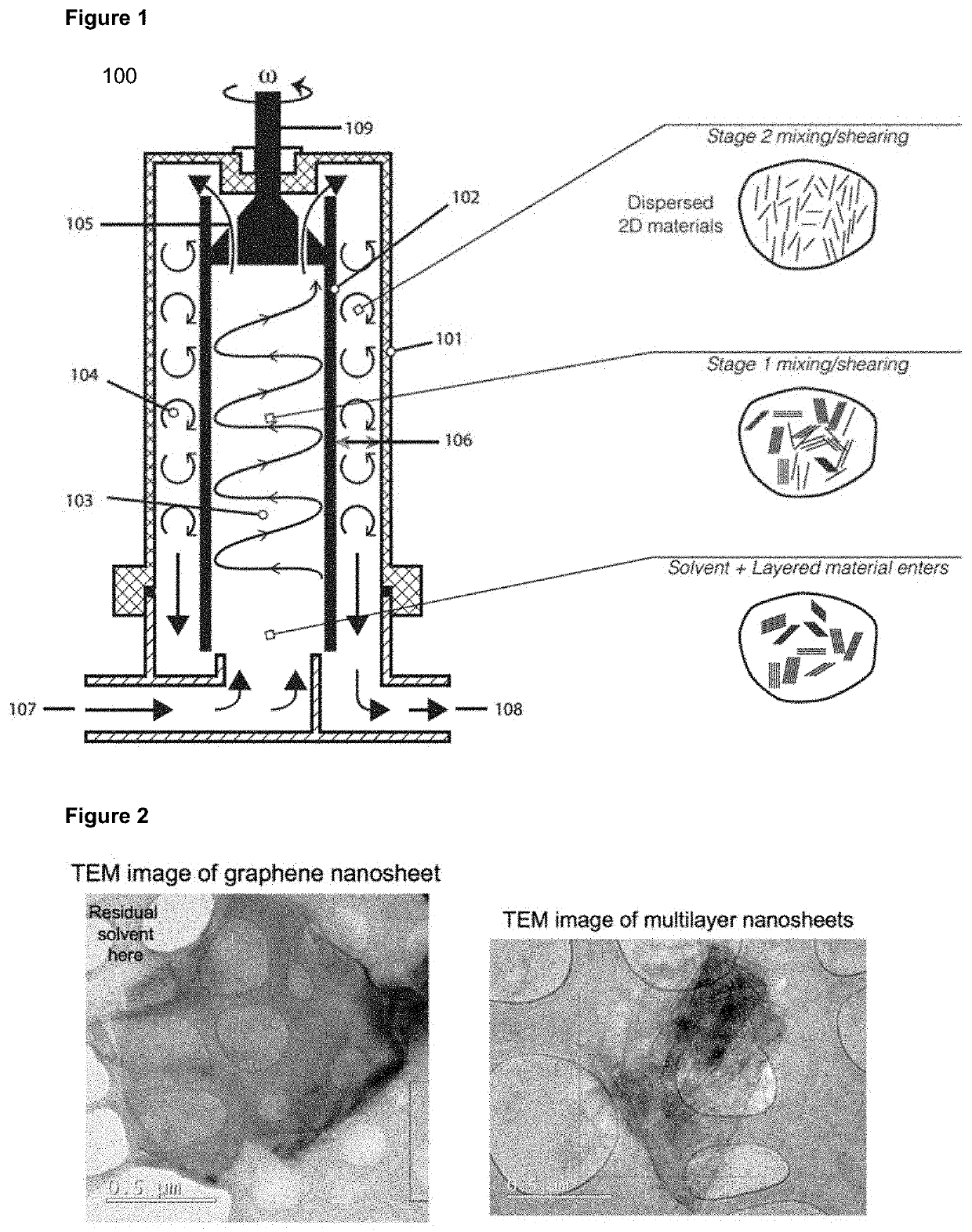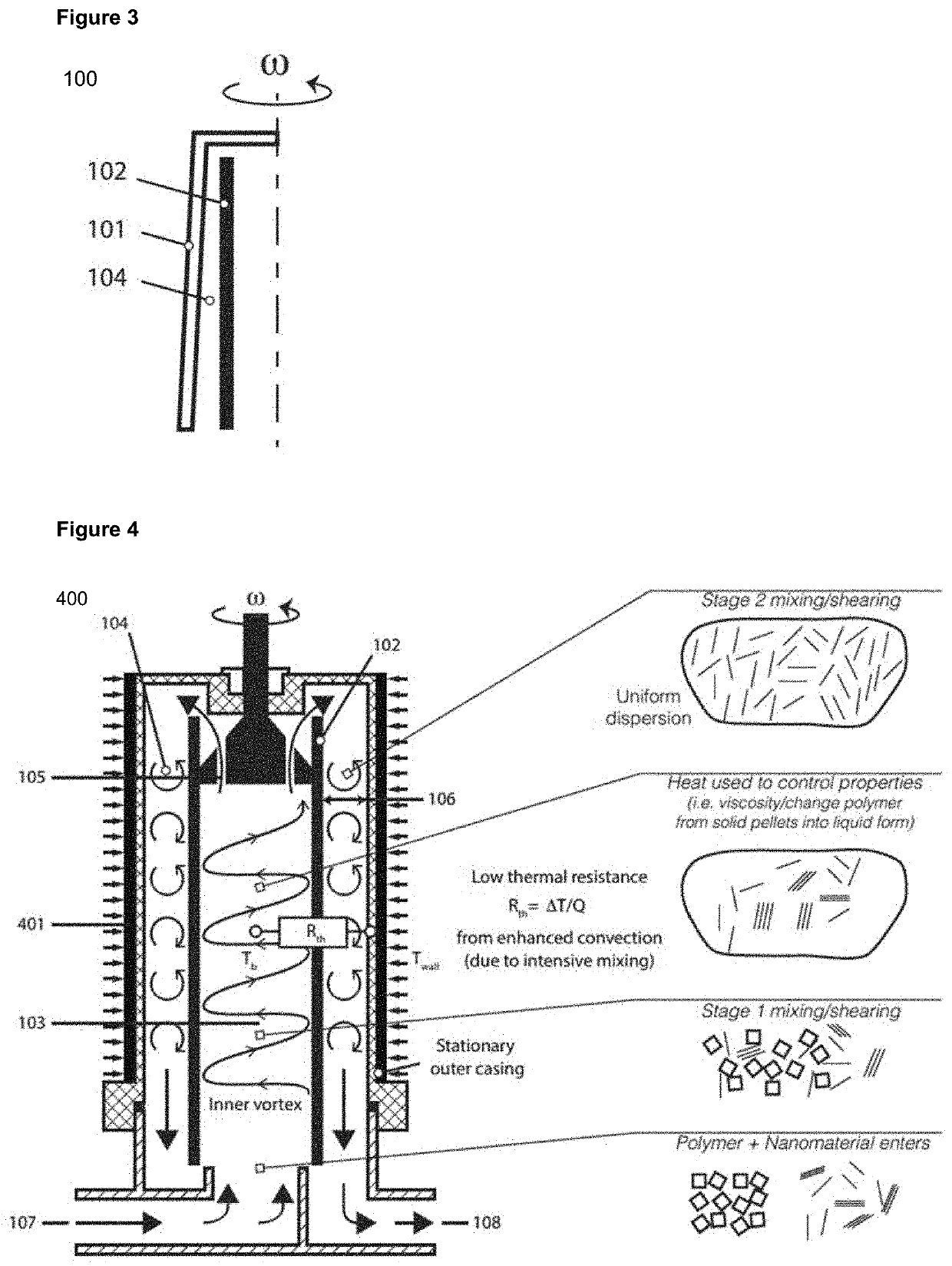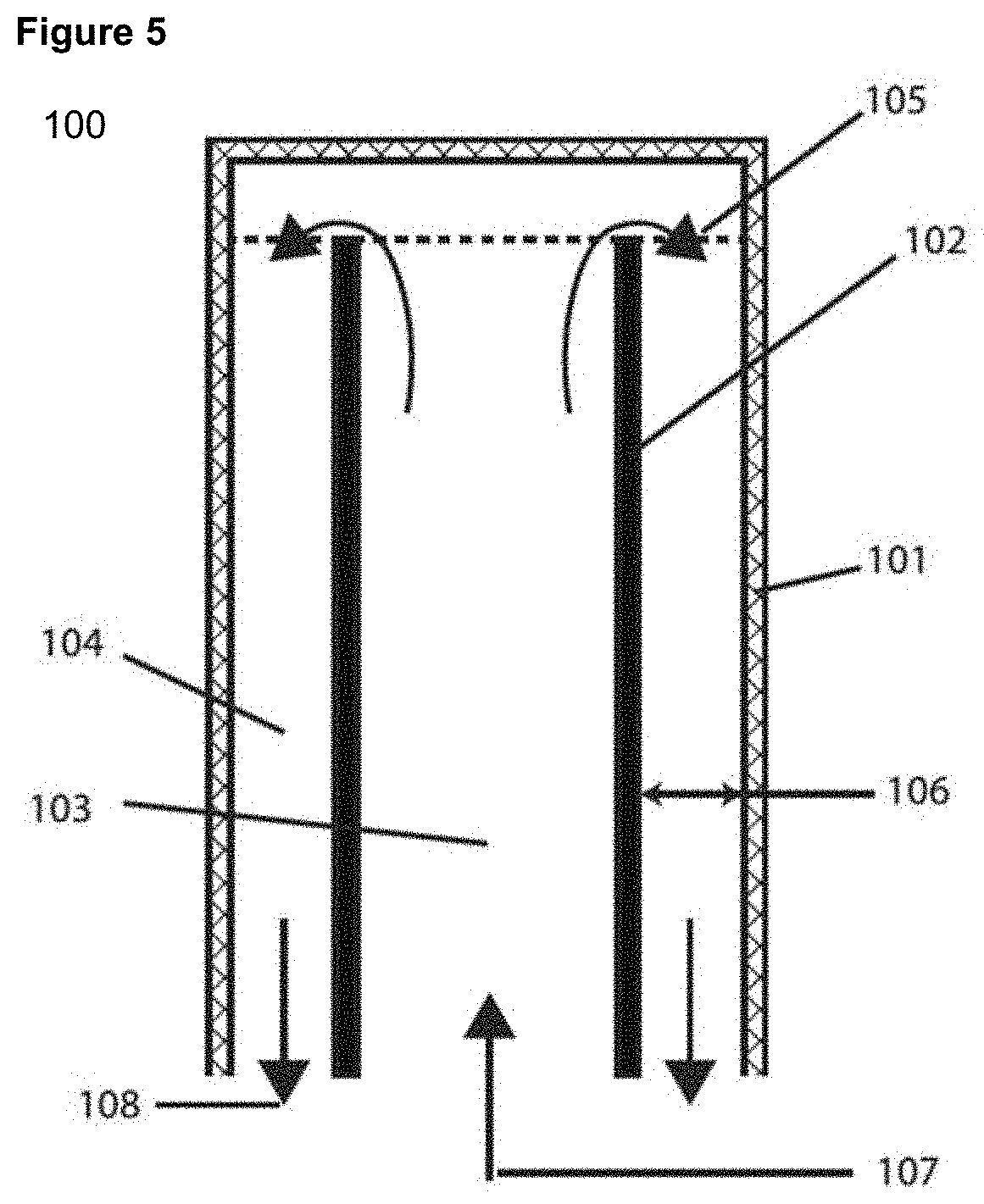Fluidic exfoliation
- Summary
- Abstract
- Description
- Claims
- Application Information
AI Technical Summary
Benefits of technology
Problems solved by technology
Method used
Image
Examples
examples
[0168]FIG. 6 presents graphene concentration over a processing time of 10 hours for the invention. This exfoliation performance was achieved in a device as illustrated in FIG. 1 at a moderate cylindrical rotor operating speed of 1333 rpm, cylindrical rotor diameter of 101 mm, cylindrical rotor height of 100 mm, outer chamber width of 2 mm, and pump flow rate of 320 ml / min. This resulted in a rotational Reynolds number of 9500. This corresponds to the Taylor vortex regime.
[0169]As a comparison, the performance of the device was compared to that of the Shear Mixing approach presented by Paton et al., Nature Materials, 13 (2014), 624-630, the contents of which are herein incorporated by reference in their entirety. In both cases, the starting graphite (Sigma Aldrich® product no. 332461), solvent (NMP), and graphite concentration (10 g / L) were identical. The volume used in both processes was also closely matched at around 1.5 L. The invention is shown to outperform the Shear Mixing appr...
PUM
 Login to View More
Login to View More Abstract
Description
Claims
Application Information
 Login to View More
Login to View More - R&D
- Intellectual Property
- Life Sciences
- Materials
- Tech Scout
- Unparalleled Data Quality
- Higher Quality Content
- 60% Fewer Hallucinations
Browse by: Latest US Patents, China's latest patents, Technical Efficacy Thesaurus, Application Domain, Technology Topic, Popular Technical Reports.
© 2025 PatSnap. All rights reserved.Legal|Privacy policy|Modern Slavery Act Transparency Statement|Sitemap|About US| Contact US: help@patsnap.com



